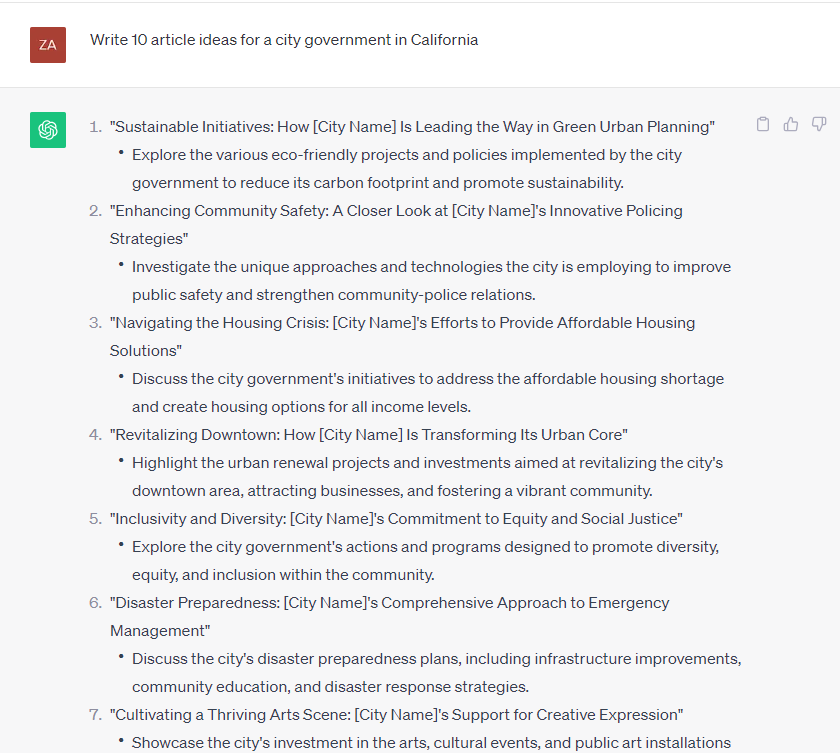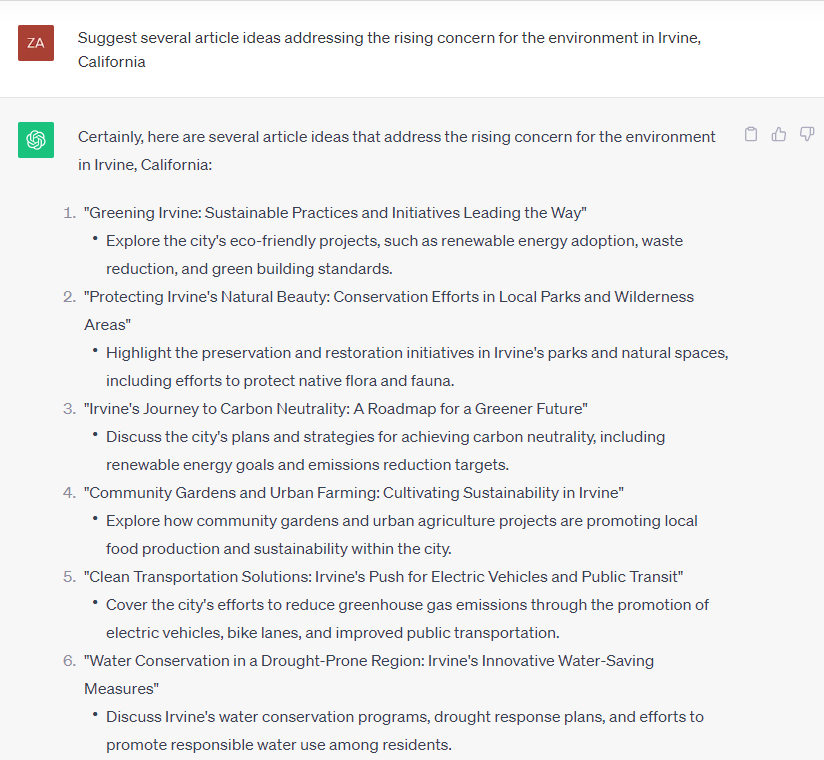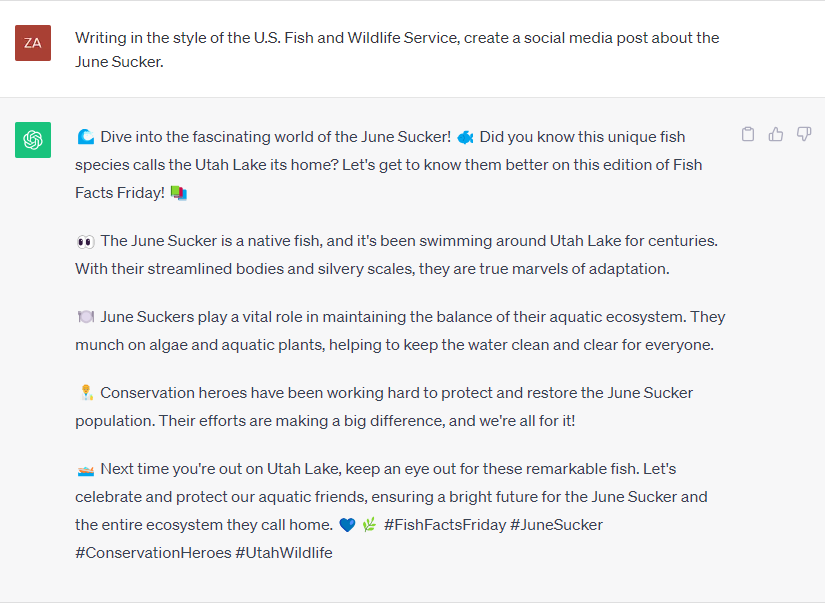If there is one thing I know, it is this: government communicators are stretched.
Stretched for time, stretched for money, and stretched for resources.
We are constantly asked to do more with less.
In today’s fast-paced digital age, government communicators face a constant challenge: how to streamline their workflows, save time, and deliver top-notch content that engages citizens effectively.
Enter artificial intelligence (AI), specifically generative AI, which I am convinced will help revolutionize how government communicators fulfill their responsibilities.
In this article, we’ll explore five powerful ways government communicators can leverage generative AI to enhance productivity and efficiency in their daily tasks.
If you have yet to experiment with AI, this blog post is for you. The ideas we will explore today are easy to test and implement, and will showcase what you’ve been missing.
If you’ve already begun to experiment with AI, I hope you find some new ideas that will help you in your day-to-day and increase your overall productivity.
For all of today’s examples, we will be using the free version of ChatGPT (GPT 3.5) and Midjourney.
1. Brainstorm Ideas
One of the first steps in creating compelling content that effectively communicates with our audience is brainstorming ideas.
Traditional brainstorming sessions can be time-consuming (which defeats the purpose of this blog post), and may not always yield the best results.
Generative AI tools, on the other hand, can provide a fresh perspective and generate innovative ideas. By inputting keywords or prompts related to your communication goals, you can quickly generate a pool of creative concepts.
Whether you’re planning a new marketing campaign, drafting a press release, or designing a social media strategy, AI can be your creative thinking partner. Even if one isn’t in the budget.
The key is to not be lazy with your prompts.
Here is an example of a prompt that I wrote hoping to generate some ideas for future blog posts that I can use at my figurative job in city government:

The ideas here are decent, but they all seem pretty generic.
Let’s push a little harder and see if we can’t get some better results.
The first step is to use your human touch, and your personal experience, and provide the AI with some additional context.
Let’s continue with our city government in California example from above.
In this example, since I figuratively work at the city, I know that one of the things our citizens are most concerned about is the environment.
Only I know this. The AI technology does not.
By including these audience insights in the prompts themselves you’ll get far better results.
Now, let’s craft a new prompt.

By simply adding the name of the city, in this example, I chose Irvine, and including an insight I have from the job, our citizens are concerned about the environment, we were able to achieve far better results.
Some of these look really good! I would read some of these, and I know our citizens would read them because it is something that they are interested in.
2. Write First Drafts
Look, I’ll be the first to admit that I don’t like writing.
I don’t get excited or goosebumps when I sit down to write another press release or blog post.
But, I will also be the first to admit that writing is arguably the single most important task that we do as government communicators.
It is essential.
So, if you’re like me this next tip is for you.
What we are going to do is train ChatGPT to write like us using our agency’s unique voice. This is a multi-step process so be sure to follow along.
Step 1: Start a new chat on ChatGPT
Step 2: Compile a list of existing content that represents your agency’s tone, voice, and writing style.
Step 3: Enter this prompt into ChatGPT “Read these (blog posts, social media posts, etc.) written by (Enter your agency name here) and summarize its writing style”
Step 4: Copy and paste into the prompt/chat the existing content you compiled
Step 5: Use this prompt, “Writing in (Enter your agency name here) style, create (a blog post about _____, draft a social media post about _____, etc.)
Step 6: Review and edit the content that was created
By first training the AI in your agency’s unique voice, and then prompting it to create content in that voice or style, you get far better results and a much higher level of consistency in a fraction of the time.
While these drafts may require refinement, they serve as an excellent starting point, saving you valuable time in the content creation process.
Next time you need to prepare a written piece of content give this tactic a try. You can even instruct the AI to produce articles, reports, or speeches.
In addition, don’t be afraid to keep prompting until you get something that is usable. Consider using prompts like:
“Expand”
“Write it again, but use fewer words”
“Write it again, but include a bulleted list”
“Write it again, but with more depth and detail”
Work with the AI to train it on what your desired outcome is. Don’t expect value from a single, simple prompt.
3. Create Social Media Posts
Crafting social media posts is one of my favorite responsibilities, but it can also be one of the most time-consuming.
Keeping up with social media trends, maintaining a consistent content calendar, and working with difficult departments are just a few of the challenges we face as SocialGovs.
Generative AI can assist by generating social media content tailored to your specific audience and objectives. AI, once trained, can assist in generating posts that are concise, impactful, and optimized for each individual social media platform.
Remember, lazy prompts = lazy results.
Some common social media prompts could include:
– Write 5 Facebook posts summarizing this news piece
– Write 5 Tweets promoting our upcoming event
– Write a social media post about this FAQ
While these prompts might generate some value, we can do better.
Let me introduce you to a fancy little tool called: AIPRM.
AIPRM is a Google Chrome Extension that sits on top of the ChatGPT interface and gives you access to hundreds of vetted and tested ChatGPT prompts.
These prompts are all searchable, upvoted by community members, and are an excellent place to start.
Here is a short clip of me using one of the prompts in their database titled: “30 Social Media Posts & Image Suggestions With 1 Click”
Thirty potential social media post ideas in less than 2 min?
Sign me up!
Did you notice that it even included hashtags and suggested images to use with the post?
Talk about potential time savings!
Don’t be afraid to poke around and experiment with AIPRM.
Test, refine, repeat.
4. Create Visuals
In today’s visual-driven digital landscape, eye-catching graphics and visuals are essential for effective communication. It’s all about stopping the scroll, and generative AI images can help you do just that.
By simply describing the type of visual you need, AI can generate infographics, charts, and images that complement the messages in your social media content, blog posts, email newsletters, and more.
This automation can significantly reduce the time spent on design and ensure that your visuals are both engaging and on-brand.
My favorite generative AI tool is Midjourney.
However, some other tools similar to Midjourney include Dall-E, Stable Diffusion, and Canva’s Magic Media Tools.
Midjourney’s interface, at the time of writing this, is solely accessible through their Discord channel.
Once there, you will be able to see in real-time some of the amazing results people are able to achieve through this technology.
To begin creating images of your own you will enter the prompt “/imagine” followed by a description of your image.
Note that you can include different styles, mediums, photography lens lengths, etc. to generate unique outputs and get something that you are happy with.
Pro Tip: Type into the search bar a few keywords related to the image you are trying to generate. The search will pull up any previous prompts from other users with those keywords.
You can then examine their prompts and the corresponding images and implement pieces of their prompt into yours to achieve better results.
I was recently putting together a presentation on drought and was searching far and wide for an image of the Colorado River experiencing drought in the future.
Instead of settling for another boring stock image, I decided to experiment with Midjourney.
Here is my prompt and the images that were generated as a result:
Each prompt will result in four different image variations. You can then click on the U1, U2, U3, or U4 to “upscale” the image of your choice from the set. Or you can click on the V1, V2, V3, or V4 to see “variations” of that particular image.
More often than not you won’t get the perfect image on the first try. It takes a little trial and error and some refining to get something you’re happy with, but hopefully you can see the posibilities of this technology.
5. Edit Existing Copy
Proofreading and editing are critical to ensure that your content is error-free and reflects the right tone with your target audience.
Generative AI tools can enhance this process by automatically checking grammar, spelling, and style. They can also provide suggestions for improving sentence structure and readability.
By leveraging AI for editing tasks, you can expedite the review process and ensure that your communications are polished and professional.
You can use ChatGPT to edit existing summaries, RFPs, internal memos, and more.
Again, as with the other tips we’ve covered today, we need to not be lazy with our prompts, train the AI, and be specific in our prompts.
Give a prompt similar to this one a try next time you want to edit an existing piece of content or copy, “You are a _____ (PIO, Social Media Coordinator, etc.), writing a(n) ______ (type of content) for a(n) targeting ______ (the piece’s audience). Rewrite the following text making it more concise.”
In addition to editing existing content and making it more concise, AI is also really good at summarizing and providing ideas for improvement of existing content.
Simply copy and paste your existing content piece into ChatGPT and ask it to suggest ideas that were not covered or included.
This works great for updating blog posts, webpages, and more!
Just Get Started
AI is here, and it is here to stay.
I understand the anxiety, concern, and perhaps fear that AI tools may bring about in some, but we need to be experimenting with this technology.
If you haven’t yet experimented with AI, I hope you learned through today’s blog post some valuable use cases to try and test out on your own.
If you’ve experimented with AI in the past, but didn’t get much out of it, or weren’t impressed, try it again. Test a few of the prompts we highlighted today. You’ll get better results. I’m sure of it.
Happy prompting!
ZACK’S FACTS
Subscribe to “The Zack’s Facts” newsletter for my monthly take on the latest industry topics, a government account spotlight, and resources for you to become a better government communitcator.



